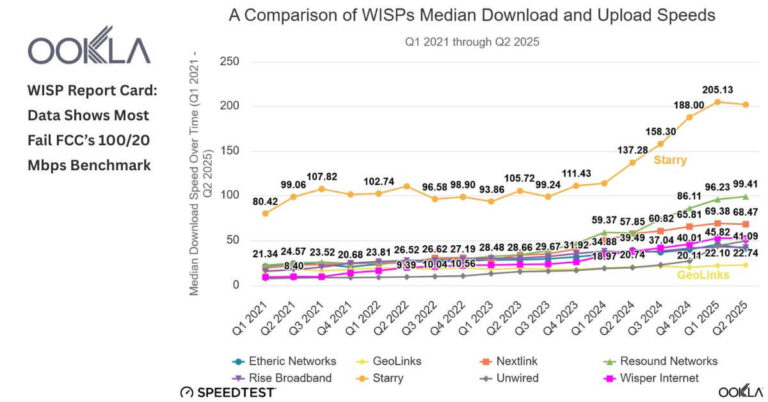- short
- November 26, 2025
- Hema Kadia
Home » CBRS
CBRS
- short
- November 26, 2025
- Hema Kadia
- short
- November 26, 2025
- Hema Kadia
- short
- November 26, 2025
- Hema Kadia
- short
- November 26, 2025
- Hema Kadia
- short
- November 26, 2025
- Hema Kadia
- short
- November 26, 2025
- Hema Kadia
- short
- November 26, 2025
- Hema Kadia
- short
- November 26, 2025
- Hema Kadia
- short
- November 26, 2025
- Hema Kadia
Miami International Airport (MIA) is transforming operations with its private CBRS network, central to its Smart Airport 2.0 strategy. The network enables secure, real-time automation across IoT devices, passenger services, and operational systems. From enhancing cybersecurity and reducing costs to monetizing connectivity for tenants, MIA demonstrates how airports can use
- Tech News & Insight
- November 21, 2025
- Hema Kadia
The FCC has advanced a rulemaking that would free up a significant slice of upper C-band spectrum for 5G and future 6G services, setting the stage for a high-stakes auction and complex satellite transition by mid-2027. The Commission unanimously approved a Notice of Proposed Rulemaking (NPRM) to clear and auction
- Tech News & Insight
- November 19, 2025
- Hema Kadia
New performance data shows U.S. WISPs are getting faster, but low‑Earth orbit players like Starlink are advancing just as quickly—and the competitive gap in rural markets is narrowing. Based on Speedtest Intelligence data from Q1 2021 to Q2 2025, eight of the larger WISPs—Starry, Resound Networks, Nextlink, Wisper Internet, Unwired
TeckNexus Newsletters
I acknowledge and agree to receive TeckNexus communications in line with the T&C and privacy policy.
Whitepaper
Private cellular networks are transforming industrial operations, but securing private 5G, LTE, and CBRS infrastructure requires more than legacy IT/OT tools. This whitepaper by TeckNexus and sponsored by OneLayer outlines a 4-pillar framework to protect critical systems, offering clear guidance for evaluating security vendors, deploying zero trust, and integrating IT,...

Whitepaper
Telecom networks are facing unprecedented complexity with 5G, IoT, and cloud services. Traditional service assurance methods are becoming obsolete, making AI-driven, real-time analytics essential for competitive advantage. This independent industry whitepaper explores how DPUs, GPUs, and Generative AI (GenAI) are enabling predictive automation, reducing operational costs, and improving service quality....

Whitepaper
Explore how Generative AI is transforming telecom infrastructure by solving critical industry challenges like massive data management, network optimization, and personalized customer experiences. This whitepaper offers in-depth insights into AI and Gen AI's role in boosting operational efficiency while ensuring security and regulatory compliance. Telecom operators can harness these AI-driven...

Check Private Network Readiness
Industry Vertical Specific Deep-Dive Assessment

Manufacturing
$750
250 questions based assessment and insights
$750
Utilities
$500
65+ questions based assessment and insights
$500
Mining
$500
160 questions based assessment and insights
$500
Aviation
Coming Soon
75+ questions based assessment and insights
Coming Soon
Ports
Coming Soon
75+ questions based assessment and insights
Coming Soon* Prices does not include tax












